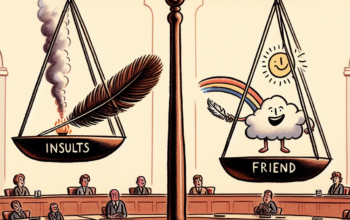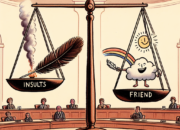Dissecting the Electoral College: Is it Time for Reform?
The Electoral College has long been a fundamental aspect of American presidential elections, shaping the democratic process since the nation’s founding. In recent years, particularly as the political landscape has evolved, the Electoral College has come under intense scrutiny and debate. As the electoral system enters the mid-2020s, many wonder: is it time for reform? This article will thoroughly dissect the Electoral College, examining its origins, functionality, ongoing criticisms, and potential paths for reform.
Understanding the Origins of the Electoral College
The Electoral College was established in 1787 as a compromise between electing the president by a vote in Congress and by popular vote. The founding fathers devised this system to balance the influence of populous states against that of less populous ones, which they feared could be drowned out in a purely democratic system. Each state is allocated a number of electors equal to the sum of its senators and representatives in Congress, leading to a total of 538 electors. A majority of 270 electoral votes is required to win the presidency.
Critics argue this system is outdated, reflecting a time when communication and travel were limited. The discrepancies in how votes translate to electoral representation raise fundamental questions about fairness and equity in today’s fast-paced, modern society. In the wake of elections where the popular vote winner lost the presidency, like in 2000 and 2016, the call for reform has intensified, suggesting that the system no longer reflects the democratic values espoused by the nation.
The Functionality of the Electoral College in Modern Elections
In the 2024 presidential election, the continued relevance of the Electoral College was apparent. With states like California and Texas wielding immense influence due to their large populations, other states felt sidelined. This mechanism can result in candidates focusing their campaigns on swing states—the battlegrounds that can shift the overall electoral outcome—rather than addressing the needs of all citizens. As a consequence, voter engagement in safe states often plummets since residents feel their votes carry less weight.
Moreover, there is significant debate surrounding the “winner-takes-all” approach practiced by most states. Under this system, a candidate winning the majority of votes in a state secures all of its electoral votes, often disregarding the minority voices. This method can distort the popular will, deepening political polarization and discouraging broad engagement with the electoral process.
The Criticisms of the Electoral College System
Key criticisms of the Electoral College include its inclination to undermine the principle of equal representation. Since the allocation of electors is not strictly proportional, smaller states receive a disproportionate number of electoral votes relative to their population size. For example, Wyoming, with its small population, has three electors, equating to one elector per approximately 190,000 residents, while in California, each elector represents about 712,000 residents. This imbalance gives disproportionate power to voters in less populated states, challenging the foundational democratic idea that every vote should carry equal weight.
Additionally, the polarized electoral outcomes resulting from the Electoral College can have systemic consequences. Notably, the phenomenon of “faithless electors”—those who do not vote according to their pledged candidate—adds an unpredictable element to the electoral process. In several instances, electors have opted to stray from party lines, raising concerns about accountability and representation. As we look toward the 2028 election, the potential for electoral dysfunctions and crises fueled by this aspect of the system sparks discussions on whether reforms are urgent.
The Public Sentiment Around Reforming the Electoral College
As of 2025, public sentiment has shifted significantly in regard to the Electoral College. Polls show that a majority of Americans—across both major political parties—support reforming or abolishing the Electoral College to create a more direct and representative electoral process. Advocates for reform argue that abolishing the system could alleviate disenfranchisement, enhance voter engagement, and foster a more representative democracy.
Moreover, state-level movements to reform the Electoral College are gaining traction. Initiatives such as the National Popular Vote Interstate Compact (NPVIC) aim to ensure that all electoral votes are awarded to the winner of the national popular vote, effectively nullifying the Electoral College’s relevance without a constitutional amendment. As states join this compact, the pressure builds on Congress to consider further reforms, indicating a transformative shift in public policy discussions.
Possible Paths for Reform: Constitutional and Legislative Approaches
Reforming or abolishing the Electoral College presents a range of potential paths, both legislative and constitutional. One approach involves amending the U.S. Constitution, a formidable task that requires two-thirds of Congress and three-fourths of state legislatures to agree on a unified reform proposal. Historical attempts to amend the Constitution regarding the electoral process indicate deep resistance, making this a challenging avenue for change.
Alternatively, the push for the NPVIC offers a more feasible solution that bypasses the lengthy amendment process. By committing to award electoral votes based on the national popular vote, participating states could gradually diminish the Electoral College’s influence without the need for a constitutional amendment. As of early 2025, several states have signed onto this compact, indicating a growing momentum for reform.
Advocates of reform also suggest introducing ranked-choice voting as an avenue to enhance voter satisfaction and representation. Under this system, voters rank candidates in order of preference, which could minimize the impact of divisive two-party competition and ensure that elected officials represent a broader spectrum of voter preferences.
Conclusion
Dissecting the Electoral College reveals its complexities and challenges in the contemporary political landscape. While it was designed to balance federal and democratic ideals, its functionality is increasingly questioned in a society striving for equity and fairness. With rising public sentiment favoring reform, it is crucial to evaluate the paths available—whether through constitutional amendments, legislative initiatives like the NPVIC, or systemic changes like ranked-choice voting. As the next presidential elections approach, the discussions surrounding the Electoral College will shape the future of American democracy.
FAQs Section
What is the Electoral College?
The Electoral College is a group of representatives (electors) chosen from each state to formally elect the President and Vice President of the United States. Each state’s number of electors is equal to the sum of its Senators and Representatives in Congress.
Why was the Electoral College created?
The Electoral College was established as a compromise during the Constitutional Convention of 1787 to balance the influence of populous states against smaller states and to ensure that all regions of the country had a say in presidential elections.
What are the main criticisms of the Electoral College?
Criticisms of the Electoral College include its tendency to distort the principle of equal representation, over-representation of less populous states, the potential for “faithless electors,” and a focus on swing states at the expense of broader voter engagement.
Is reforming the Electoral College a realistic prospect?
Reforming the Electoral College is challenging but not impossible. Feasible methods include legislative initiatives like the National Popular Vote Interstate Compact or introducing ranked-choice voting, while amending the Constitution presents a more complex route.
What would happen if we abolish the Electoral College?
Abolishing the Electoral College would mean that the president would be elected directly by the popular vote nationwide, which could enhance voter engagement, reduce disenfranchisement, and potentially change the dynamics of election campaigning.












